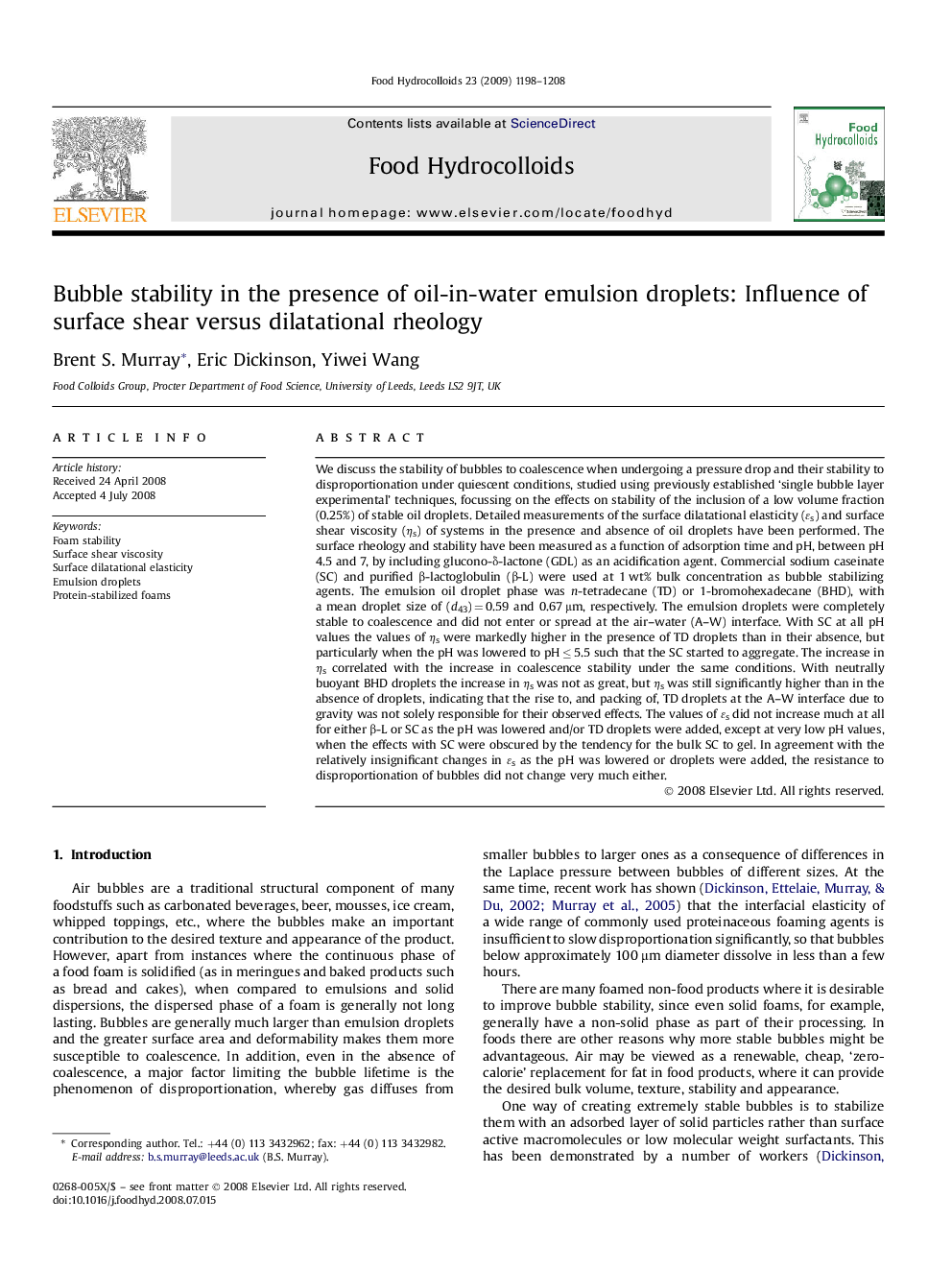| Article ID | Journal | Published Year | Pages | File Type |
|---|---|---|---|---|
| 605695 | Food Hydrocolloids | 2009 | 11 Pages |
We discuss the stability of bubbles to coalescence when undergoing a pressure drop and their stability to disproportionation under quiescent conditions, studied using previously established ‘single bubble layer experimental’ techniques, focussing on the effects on stability of the inclusion of a low volume fraction (0.25%) of stable oil droplets. Detailed measurements of the surface dilatational elasticity (ɛs) and surface shear viscosity (ηs) of systems in the presence and absence of oil droplets have been performed. The surface rheology and stability have been measured as a function of adsorption time and pH, between pH 4.5 and 7, by including glucono-δ-lactone (GDL) as an acidification agent. Commercial sodium caseinate (SC) and purified β-lactoglobulin (β-L) were used at 1 wt% bulk concentration as bubble stabilizing agents. The emulsion oil droplet phase was n-tetradecane (TD) or 1-bromohexadecane (BHD), with a mean droplet size of (d43) = 0.59 and 0.67 μm, respectively. The emulsion droplets were completely stable to coalescence and did not enter or spread at the air–water (A–W) interface. With SC at all pH values the values of ηs were markedly higher in the presence of TD droplets than in their absence, but particularly when the pH was lowered to pH ≤ 5.5 such that the SC started to aggregate. The increase in ηs correlated with the increase in coalescence stability under the same conditions. With neutrally buoyant BHD droplets the increase in ηs was not as great, but ηs was still significantly higher than in the absence of droplets, indicating that the rise to, and packing of, TD droplets at the A–W interface due to gravity was not solely responsible for their observed effects. The values of ɛs did not increase much at all for either β-L or SC as the pH was lowered and/or TD droplets were added, except at very low pH values, when the effects with SC were obscured by the tendency for the bulk SC to gel. In agreement with the relatively insignificant changes in ɛs as the pH was lowered or droplets were added, the resistance to disproportionation of bubbles did not change very much either.
